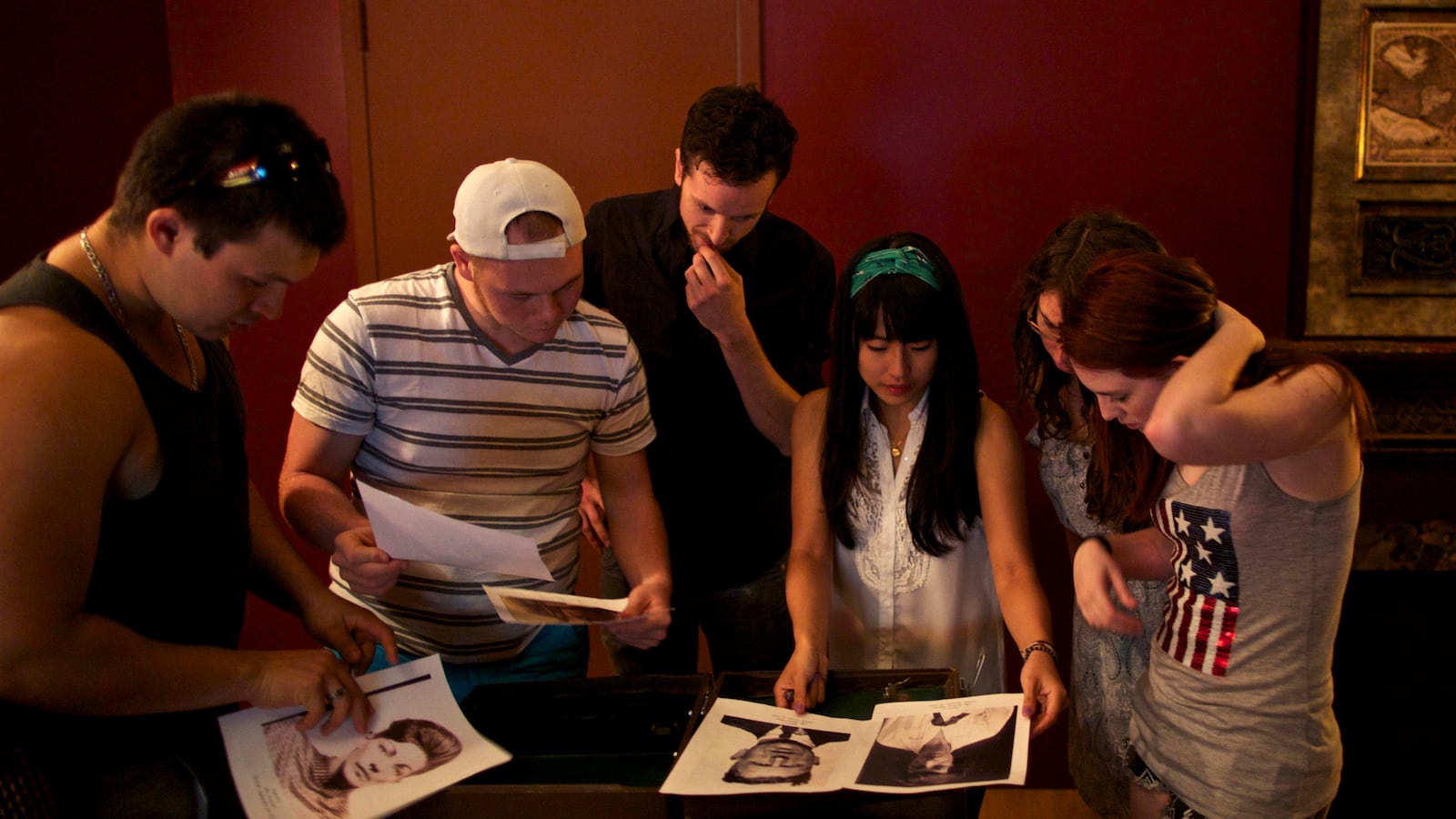If there is anything the Saw franchise has taught me (yes, I’ve seen all seven), it’s that being locked in an unfamiliar room is really not the best situation to find yourself in—especially one with a clock counting down from 60 minutes. Yet, last Friday night, I found myself in this exact scenario, rummaging through drawers, tugging on furniture, and attempting to find even the smallest clue that might help me escape before my hour ran up.
Granted, I entered this on my own accord. I had signed up with five other friends for Escape the Room NYC, an immersive gaming experience that is quickly becoming one of New York’s top attractions. With two locations in New York City (Midtown and the Lower East Side), patrons can chose between five scenarios—Home, Agency, Office, Theater, and Apartment—of various capacities to solve riddles and puzzles hidden throughout the room.
The Home version that I entered can host up to six people. Its Victorian decor is reminiscent of Sherlock Holmes’ abode. Dusty books, smoking pipes, tarot cards, and a Ouija board fill the antique furniture positioning any object as a clue. There are also suspects, evidence, and a few hidden chambers that hold vital tools to help advance closer to the hidden key.
The inspiration from the game stems from Internet games, such as Toshimitsu Takagi’s Crimson Room, that began appearing online in the early 1990s. In Crimson Room, players awoke in an unfamiliar room with no way of knowing how to escape. Clicking objects revealed subtle clues to lead you out. Similar web-based games spawned before hundreds began appearing in App stores for mobile phones: Can You Escape, Forever Lost, and Dr. Stanley’s House, to name a few.
“It’s now an entire sub-genre of video games,” Escape the Room’s creator, Victor Blake, told The Daily Beast. “They all have their own spin and their own puzzles. I thought a real-life version of this would be awesome.”
Last summer, Blake began brainstorming ideas for his very own version—Escape the Room NYC, which launched as a pop-up last November. In its 10-month run, the attraction has risen to No. 3 on TripAdvisor’s top attractions for New York, beating out almost every Broadway show (the Carole King Musical is #2), museum (The Frick is #1), and every other attraction the city has to offer. Even Sleep No More, the sensational interactive theater based on Macbeth, sits at #124.
“Those guys paved the way for us,” Blake said of Sleep No More’s production company Punchdrunk. But where the immersive performances of Sleep No More, Queen of the Night and Then She Fell introduced a new form of entertainment, allowing spectators all access to every aspect of the show, they do not encourage an active, personal investment, something Blake finds essential for this type of entertainment.
“We build the games where it’s not about the individual puzzles,” he said “It’s about that emotional arc. It’s about the timing and the reason that you feel frustrated. And the release of solving that next step.”
The further I advanced in the game, the closer I found myself on the brink of giving up (if not a complete emotional meltdown). The clues became more complex. The possibilities grew. Time continued to dwindle down. At one point, when an elaborate code was displayed on the walls of a secret second room, my frustration on not being able to solve it as the time ticked down to 10 minutes almost prompted me to start turning over furniture and ripping the sockets out of the wall—which I was specifically advised NOT to do. (People have caused electrical shocks affecting the whole facility by putting objects into outlets.)
If it wasn’t for our guide, who sat watching from the control room and sent helpful hints the more we struggled, we may never have gotten as close to getting out as we did. The satisfaction from solving each clue made the game that much more exciting.
“I want people to win and I want people to have good time,” Blake revealed, adding that only 15-20 percent of participants actually escape. “But that’s the sort of up-and-down that makes the game so fun.” Where we thought we had almost escaped in the first 20 minutes, other rooms get that feeling with 10 minutes left, realizing they still have further to go.
With its success, Escape the Room is now evolving from what Blake compares to an “Off Broadway” production to a fully-fledged spectacular. Lighting designers and sound engineers are working with set and game designers to create even more realistic scenarios for the three additional outposts they plan to open, beginning with Philadelphia on Wednesday, and two more in other U.S. cities before the end of the year.
Despite it frazzling my brain, I’d have to go along with the TripAdvisor contributor who commented, “It’s the most fun you can have in an empty room.”






